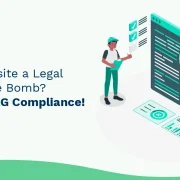
Types Of Installation Testing and How To Do It?
Summary
Explore key installation testing types and test cases to guarantee flawless app installs across devices for a seamless user experience.
The installation of an application is crucial, and any flaw in the installation can result in the user discarding the application. Hence, application installation testing is needed to ensure a smooth installation.
Application Implementation testing, otherwise known as Application Installation Testing, tests the mobile application’s successful installation across different mobile phones, gadgets, models, and OS. Application Installation Testing is usually carried out before the application first interacts with its customers. It is the last phase of the software testing life cycle (STLC). It ensures that all the components of your application are fully coordinated. Application uninstallation is just as important. After the application is uninstalled from the handheld device, it is critical that all related files are also deleted, and this is ensured by application uninstallation testing.
Table of Contents:
- Types of Mobile Application Installations
- Steps for Successful Application Installation Testing
- Test Cases for Application Installation Testing
Types of Mobile Application Installations
Listed below are several types of mobile application installations:
- Silent installation
- Attended application installation
- Unattended mobile installation
- Network mobile installation
- Clean mobile installation
- Automated mobile installation
Things to check before performing Application Installation testing:
- The various operating systems the application supports
- The type of installation that the application performs
- The OS on which the application has to be tested
Also Read: How to Perform API Testing on Software Apps?
Steps for Successful Application Installation Testing
Here are the steps to carry out application installation testing successfully:
- Check for existing applications and validate if the application checks for it too.
- Check if the installers draw all the instructions properly.
- Cancel/stop the installation process midway to check if the system returns to its original state.
- Manually check the disk space and validate whether the application installer has calculated the disk space appropriately.
- Confirm the application’s responses in case of low disk space. Check if the application returns an appropriate error message when the device has low disk space.
- Test for changes that take place in the registry during the application installation process.
- Perform application uninstallation testing that ensures all related files are deleted once the application has been uninstalled.
Also Read: All You Need To Know About Configuration Testing
Test Cases for Application Installation Testing
Typical test cases while performing Application Installation Testing are as follows:
- Account for all the requirements and consider test cases for all the workflows.
- Include test cases to verify if the old version of an application is already installed and, if so, have a test case to verify the installation of the application on the same path.
- Have test cases that check for disk space available for installation and include cases to test the disk space before and just after installation.
- Test for inadequate disk space and the corresponding error message.
- Include Test cases that verify if your application prompts an appropriate error message in response to an error during installation.
- Include a test script for checking the changes in the registry.
- Include test cases for a forced stop of the installation.
- Include test cases for both custom installation path and default installation path.
- Test for a low RAM condition and the corresponding error message.
- Test application installation when there is high security and the firewall is on.
- Test how the application installs while another application of a similar type is running concurrently.
- Test the installation process under varying network speeds.
- Test the installation during multiple concurrent installations.
- Include test cases to check the time taken for both the installation and the extraction process to be completed.
- Have test cases to test the path of extraction of the application.
- Include test cases for the uninstallation of the application and have test cases to check if all related files are deleted at the time of uninstallation. Also, have test cases to check uninstallation behavior when stopped midway.
- Test for patch installation and update installation.
- Have test cases to check the reaction of the installer when a newer version of the app is present and the user is installing an older version.
- Include test cases for different interruptions like an incoming call or a message, low battery, plugging in the charger, etc.
- Include test cases to check the installation path both in SD card and phone memory.
At Hurix Digital, our quality assurance team ensures that your application has been installed correctly, with all the necessary modules and requirements, so that it can perform the task required flawlessly.
To know more about our solutions, Contact us today!

Vice President & SBU Head –
Delivery at Hurix Technology, based in Mumbai. With extensive experience leading delivery and technology teams, he excels at scaling operations, optimizing workflows, and ensuring top-tier service quality. Ravi drives cross-functional collaboration to deliver robust digital learning solutions and client satisfaction








